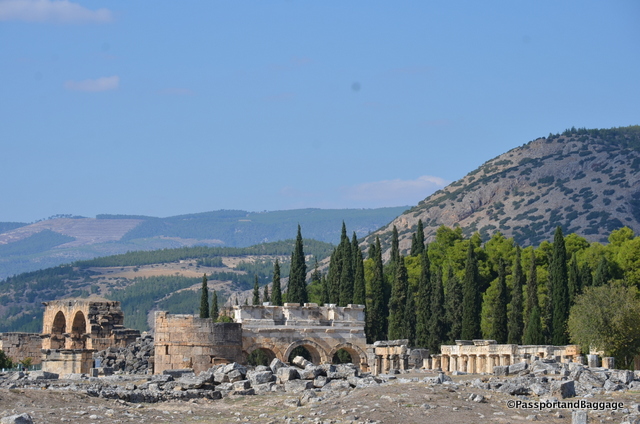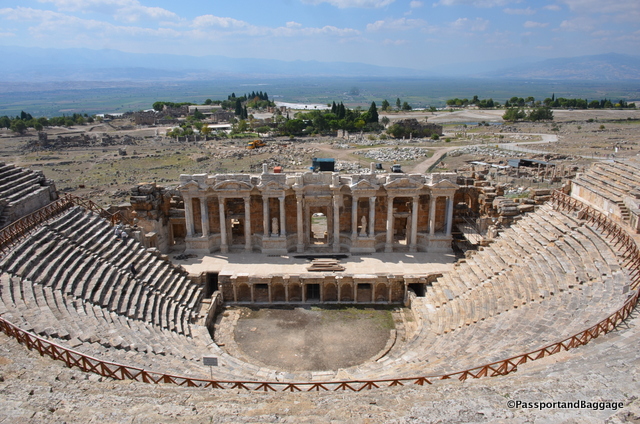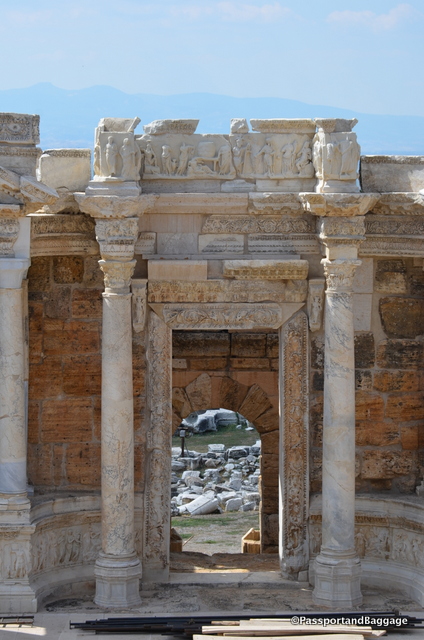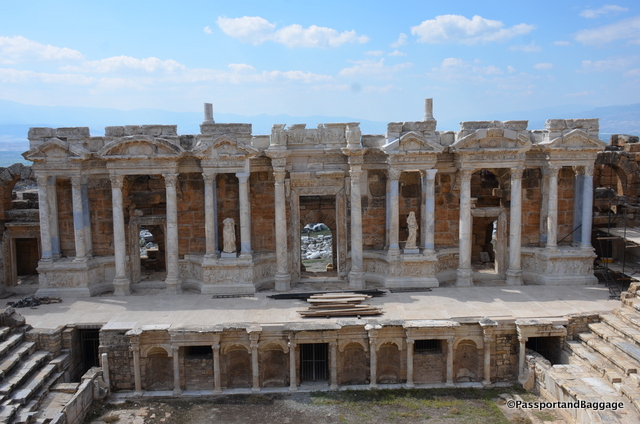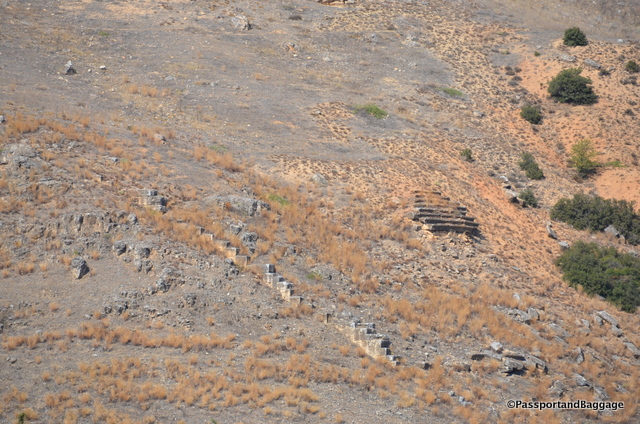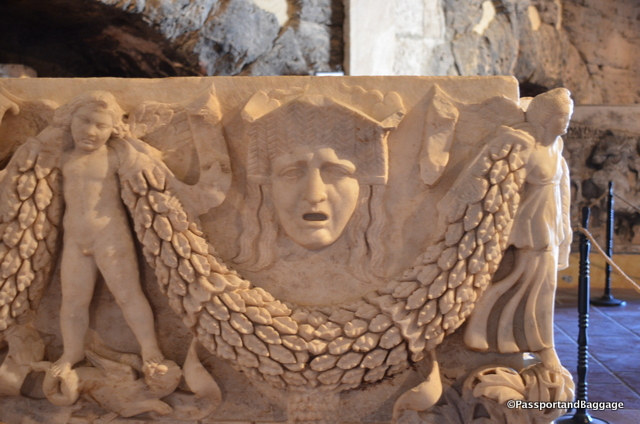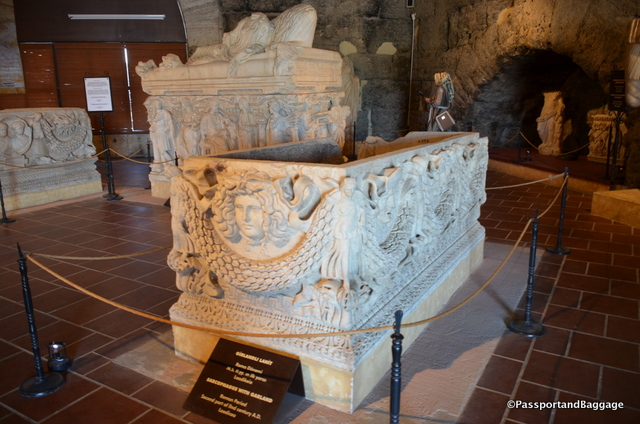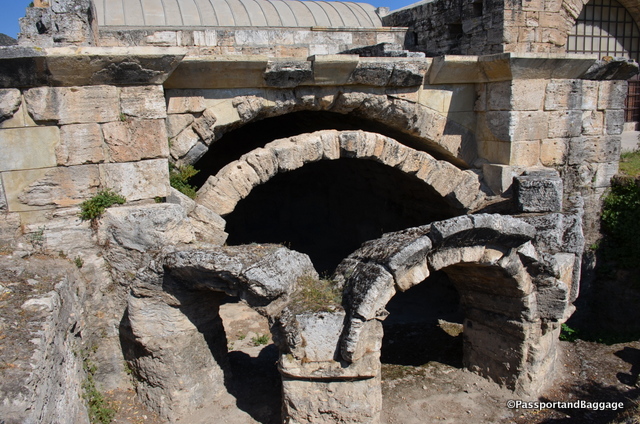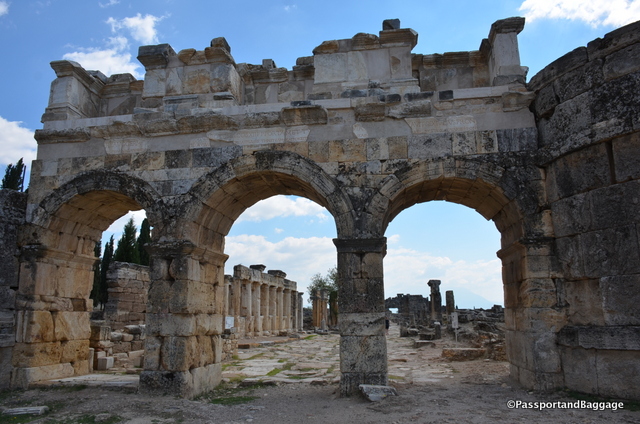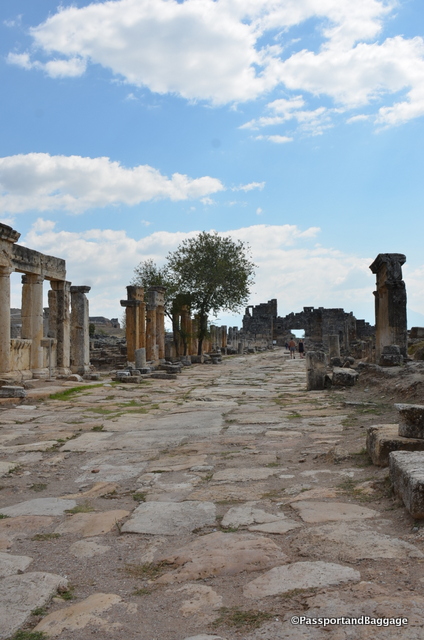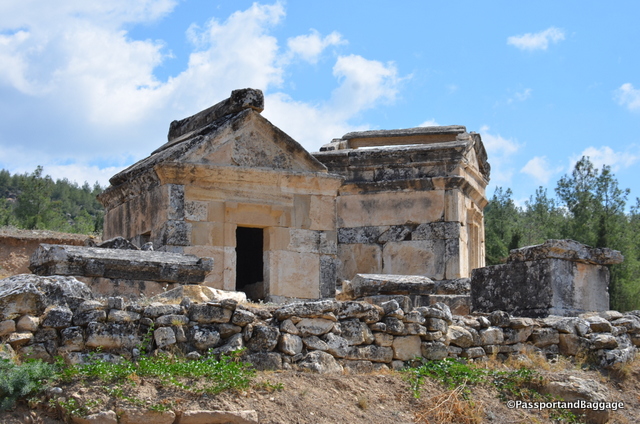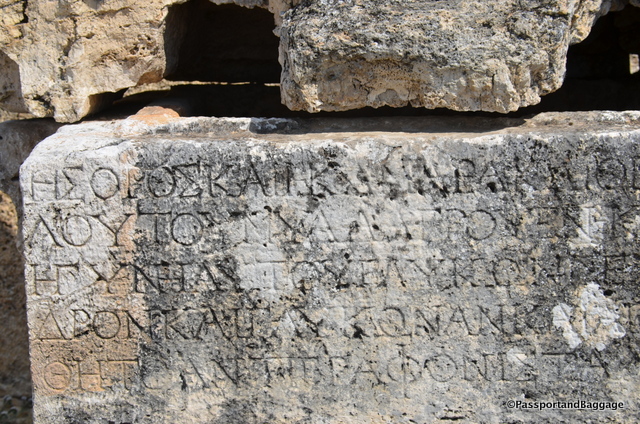Hieropolis is a fascinating place to visit as there are only a few historical facts known about the origin of the city. The Phrygians built a temple, probably in the first half of the 3rd century BC and this temple would eventually form the center of Hierapolis.
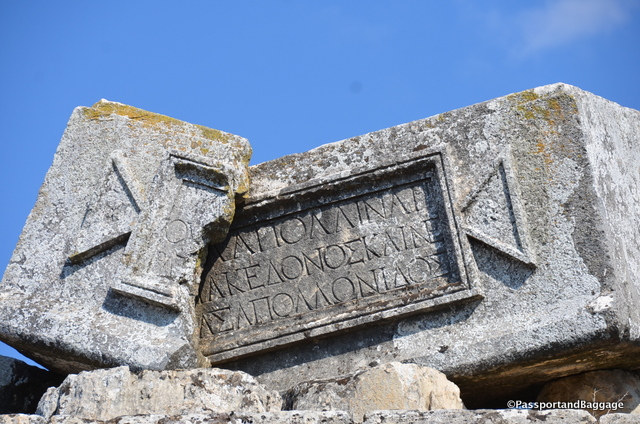
The necropolis contains many sarchophagi lost in the various earthquakes. This particular one mentions the occupant Aelios Apollinarios and his wife Neratia Apollonis
In 133 BC Attalus III bequeathed his kingdom to Rome and Hierapolis became part of the Roman province of Asia. Then in AD 17, during the rule of the emperor Tiberius, a major earthquake destroyed the city.
The city rebuilt and continued to expand until the year 60, during the rule of Nero, when an even more severe earthquake left the city completely in ruins.
After that the city was rebuilt in the Roman style with imperial financial support. During this period it grew to look as it does today.
The theatre was built in 129 for a visit by the emperor Hadrian. It was renovated under Septimius Severus (193–211). (It was destroyed during subsequent earthquakes and what you see today is a reconstruction taken place in modern times. )
During this golden ear of Hierapolis, thousands of people came to take the medicinal properties of the hot springs and so new building projects were started: two Roman baths, a gymnasium, several temples, a main street with a colonnade, and a fountain at the hot spring.
Hierapolis became one of the most prominent cities in the Roman Empire in wealth and its population of 100,000.
During the 4th century, the Christians entered and filled Pluto’s Gate (the Plutonium) with stones as a way of subjugating the religion of the time and propagating Christianity. At the same time the Roman baths were transformed to a Christian basilica.
In the early 7th century, the town was devastated first by Persian armies and then by another destructive earthquake.
In the 12th century, the area came under the control of the Seljuk sultanate of Konya before falling to crusaders under Frederick Barbarossa and their Byzantine allies in 1190. About thirty years later, the town was abandoned. In 1354, the great Thracian earthquake toppled the remains of the ancient city and the ruins were slowly covered with a thick layer of limestone.
Hierapolis was first excavated by the German archaeologist Carl Humann in 1887 and excavations still continue today.
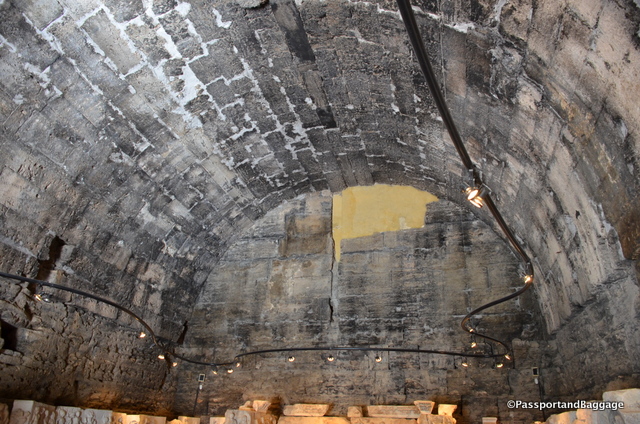
The vaulted ceiling of the baths are incomprehensible in their vastness and the quality and skill of their engineering
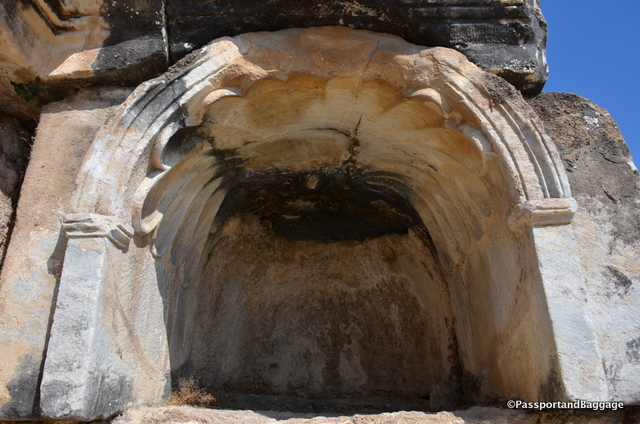
The Ploutonion “Place of Pluto” or Pluto’s Gate was a a religious site dedicated to the god Pluto (another name for Hades). The site is built on top of a cave which emits toxic gases, hence its use as a ritual passage to the underworld. Ritual animal sacrifices were common at the site.
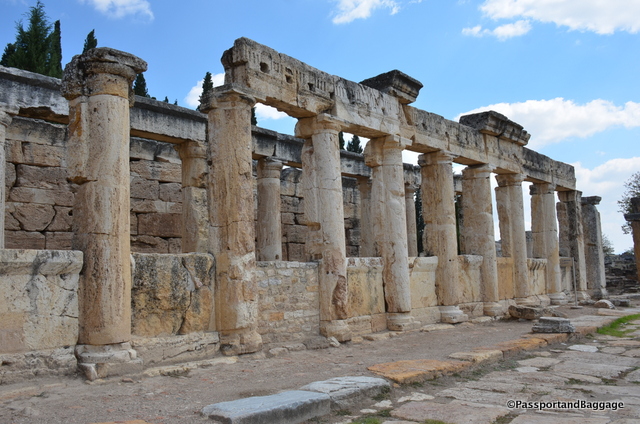
The latrine of Hieropolis was found in a state of collapse from an earthquake and was reconstructed in modern times. The room is divided longitudinally by a row of columns that supported a roof composed of travertine. Along the two long sides ran a drain sluicing the liquids into the cloaca beneath Frontinus Street. Along the perimeter walls were seats with holes and a small channel with clean running water. The construction is dated to the end of the 1st century AD.
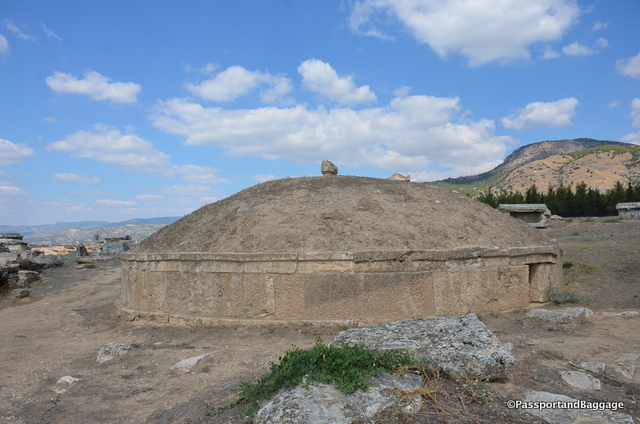
This is a tumulus. A low cylindrical drum made of travertine slabs supporting an earthen cone. It is another form of tomb and dates to the 2nd century AD with an inscription to its last occupant Lucius Salvias Paolinus.
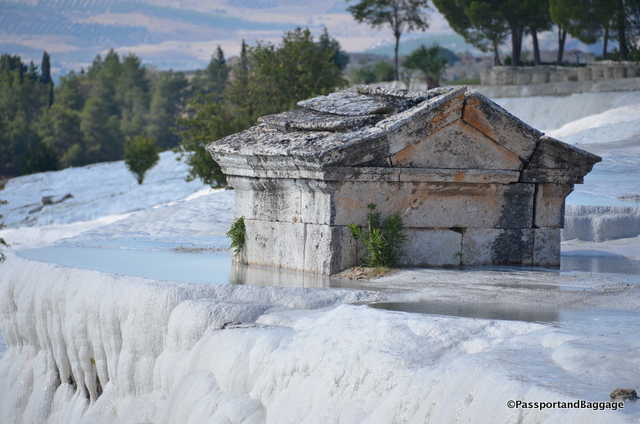
One of the few buildings being taken over by the carbonite materials of the mineral pools of Pamukkale
